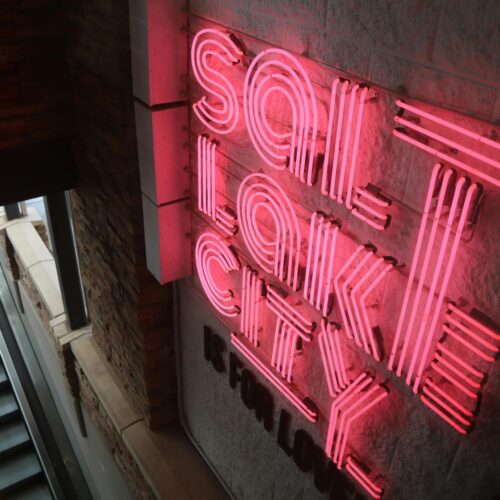Project SAFE (Serving Adolescents and Families Effectively) is a diversion program targeting juveniles with behavioral health challenges between the ages of 13 and 17 who are charged with an offense and referred to the Douglas County Juvenile Court or Department of Juvenile Justice. The program is designed to help prevent incarceration or re-incarceration of juveniles and address previously unidentified and untreated mental health concerns. The program offers mental health treatment, creative interventions, and support and coordination services to youth who have court involvement and behavioral health concerns. Interventions include screening, assessment, and a variety of treatment options.
How did your jurisdiction realize that there was a need to respond to the prevalence of individuals with mental illnesses in the criminal justice system?
During the data collection process to prepare for the JMHCP grant proposal we found that from February to October 2006, mental health assessments were completed on a total of 185 individuals charged with their first offense in Douglas County. Of those youth, a striking 85 percent identified mental health needs. There was also concern that youth who appeared in court for a first-time offense may have had unidentified mental health issues that went undetected until they come back through the court system on subsequent charges, making it difficult to provide early intervention treatment options. This data, in conjunction with statewide and national statistics about the prevalence of juvenile mental health issues, helped our team decide that this type of program was needed.
How did your initiative capitalize on pre-existing relationships or partnerships in the jurisdiction, or build new ones?
Since Douglas County was awarded a JMHCP Planning and Implementation grant, with six months dedicated to planning and 30 months for the program’s implementation, the planning team had the time necessary to establish common goals around the development of our implementation plan. The planning team comprises individuals from mental health, the juvenile court, the department of juvenile justice, the school system, and the department of family and children services. This initiative has allowed us to increase our collaboration by building upon our common purpose of identifying and diverting youth with mental health issues from incarceration when appropriate. Previously existing relationships have been strengthened through this project. This helps the initiative and the community at large.
How did you identify your program’s target population?
The juvenile court and mental health stakeholders jointly decided on the elements that would constitute the appropriate target population. Some of the decision-making for the target population was based on treatment services available in the community and the age range (13-17) of the youth that are most likely to commit a crime that would result in a charge.
What has been your biggest challenge and how are you addressing it?
Our biggest challenge came during the planning phase. The challenge was in defining eligibility criteria in a way that the justice side and mental health side could agree on. While establishing eligibility criteria may appear simple on the surface, this process took time to work out and went through several revisions. The issue was resolved, but communication and honest respect for everyone’s opinions was key to the collaboration.
What has been one of your biggest successes?
One of our biggest successes has been simple: having the juvenile court, the mental health partners, the department of juvenile justice, and our other partners all collaborate to develop a strategic plan in the given timeframe and to have equal enthusiasm about this project. We have had buy-in from both the justice and mental health systems, and that is exciting. Additionally, there is ongoing collaboration and the project design is set up in a way to ensure that the infrastructure of the collaboration (i.e. communication, joint decision making, joint oversight, etc.) continues throughout the implementation part of this project.
What steps have you taken or are planning to take to sustain your initiative?
We have utilized existing staff in the mental health agency and the juvenile court to provide the treatment components of this project (no new staff were hired for treatment component). We have also designed the project so that we provide services that are billable under Medicaid or Managed Care Medicaid. We are also looking at extreme cases where the youth could possibly benefit from the project but is not covered by Medicaid, and how the juvenile court may be able to supplement some funds to assist the family. This element is still in the planning phase.
Contact Information: Monica Parker
mparker@cobbcsb.com
The sharp rise in school shootings over the past 25 years has led school officials across the U.S.…
Read MoreA three-digit crisis line, 988, launched two years ago to supplement—not necessarily replace—911. Calling 988 simplifies access to…
Read MoreIt would hardly be controversial to expect an ambulance to arrive if someone called 911 for a physical…
Read More Taking the HEAT Out of Campus Crises: A Proactive Approach to College Safety
Taking the HEAT Out of Campus Crises: A Proactive Approach to College Safety
The sharp rise in school shootings over the past 25 years has…
Read More From 911 to 988: Salt Lake City’s Innovative Dispatch Diversion Program Gives More Crisis Options
From 911 to 988: Salt Lake City’s Innovative Dispatch Diversion Program Gives More Crisis Options
A three-digit crisis line, 988, launched two years ago to supplement—not necessarily…
Read More Matching Care to Need: 5 Facts on How to Improve Behavioral Health Crisis Response
Matching Care to Need: 5 Facts on How to Improve Behavioral Health Crisis Response
It would hardly be controversial to expect an ambulance to arrive if…
Read More









